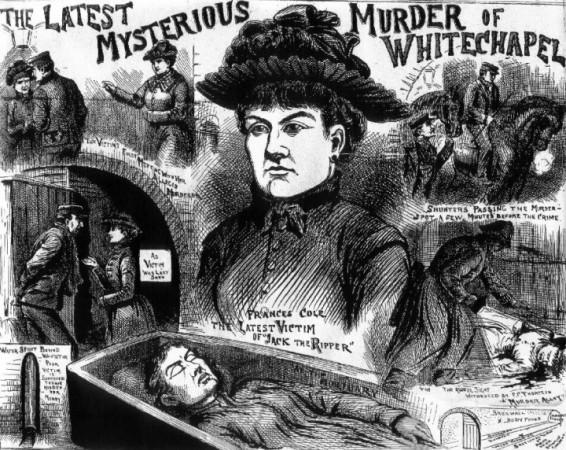
126 years after Britain was left shocked and baffled by the grisly murders in east London, Jack the Ripper has finally been identified, with the help of a shawl recovered from the crime scene of his fourth victim.
Known as one of the greatest murder mysteries of all time, the 19th century case in Whitechapel has inspired numerous books and films, and left criminologists around the world interested yet perplexed.
The horrifying pattern of murders of five women, all prostitutes, in 1888 and the mysterious killer behind them has been discussed time and again, invoking interests of generations.
However, thanks to the forensic science and technology of the 21st century, Jack the Ripper - a name given to the ruthless murderer by the London media at that time - has finally been identified as Polish immigrant Aaron Kosminski, according to the Daily Mail.
Kosminski was a barber, working right round the corner in Whitechapel.
How was Kosminski Identified?
A blood-stained shawl, found next to one of the victims - Catherine Eddowes, led to the identification of perhaps the most talked about criminals in history.
The shawl was bought by Russell Edwards, who describes himself as an "armchair detective". The person who sold the shawl to Edwards claimed that one of his ancestors was an investigating officer in the death of Eddowes, and he picked up the shawl from there. Eddowes was the fourth victim of the Ripper.
The landmark discovery was made after Edwards sent the shawl to Dr Jari Louhelainen, a world-renowned expert in analysing genetic evidence from historical crime scenes.
Dr Louhelainen, with the help of latest technologies, extracted and compared the DNA from descendants of Eddowes and the suspect. The shawl contained evidence of the Ripper's semen and Eddowes' blood, which led to the breakthrough.
Kosminski, a Polish Jew who fled to London with his family in the early 1880s, was one of the three most credible suspects listed by police at that time. Kosminski was identified by one of the witnesses and was kept under police custody for 24 hours. However, due to lack of evidence, the police had to let him go.
It also became evident during the police surveillance that Kosminski was mentally ill. The report suggests that he was perhaps paranoid schizophrenic and suffered from auditory hallucinations. He was also a misogynist, prone to 'self-abuse' - a euphemism for masturbation.
Dr Louhelainen told the Mail that he is convinced Kosminski is the killer.
"Now that it's over, I'm excited and proud of what we've achieved, and satisfied that we have established, as far as we possibly can, that Aaron Kosminski is the culprit", he stressed.

















